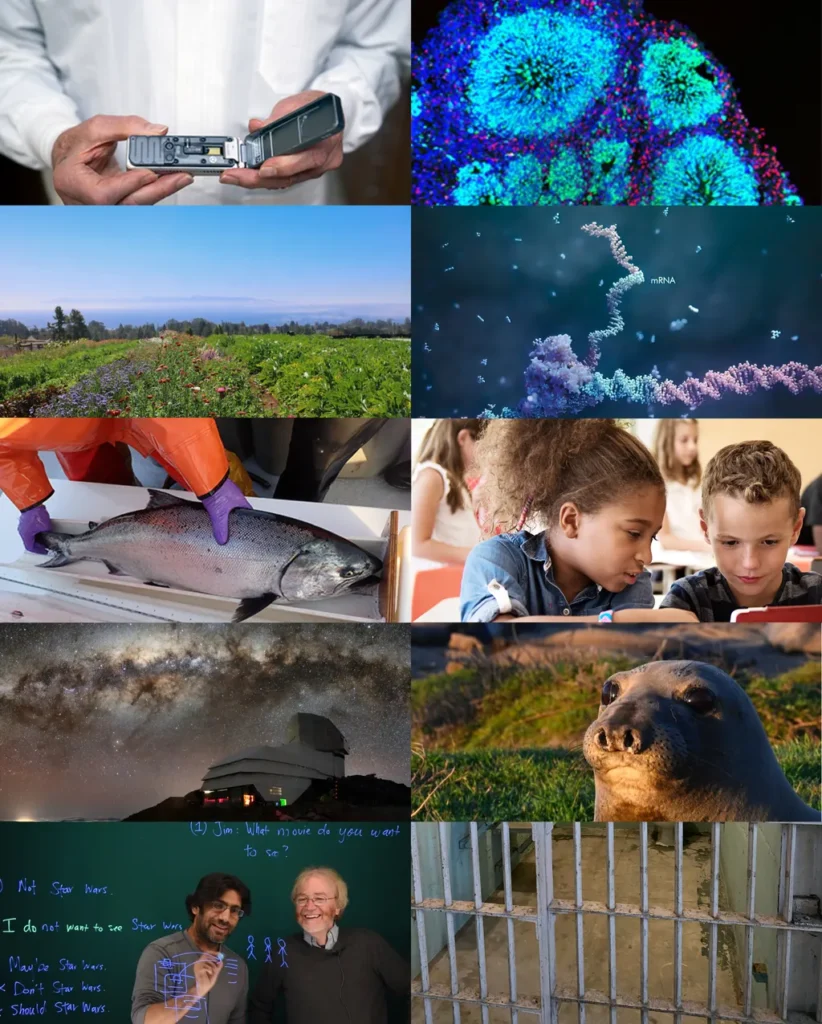UC Santa Cruz has long been a beacon of innovation and discovery, with its research reaching far beyond the campus and into the world. The university’s work has not only advanced our understanding of the natural world but has also had a profound impact on human health, agriculture, and technology. Much of this groundbreaking research has been made possible through the support of federal agencies such as the National Science Foundation, the National Institutes of Health, and NASA.
One of the most significant contributions from UC Santa Cruz is the development of nanopore sequencing technology by David Deamer and Mark Akeson, both emeritus professors of biomolecular engineering. This revolutionary method of reading DNA and RNA has transformed genetic sequencing, making it more accessible and affordable. The resulting technology has been used to map the spread of COVID and Ebola, and even on the International Space Station to sequence organisms growing there. The creation of the MinION, the only hand-held device for genetic sequencing, has enabled sequencing in remote and resource-poor environments, leading to some of the most significant genomics breakthroughs of the last two decades.
UC Santa Cruz also played a pivotal role in assembling the first working draft of the human genome, an achievement often compared to the moon landing of modern biology. Researchers at the university continue to break new ground in decoding our DNA, with the release of the first truly complete sequence of a human genome in 2022. This achievement was made possible by the Telomere-to-Telomere (T2T) Consortium, an international team of scientists organized by Karen Miga, associate professor of biomolecular engineering at UC Santa Cruz, and Adam Phillippy at the National Human Genome Research Institute (NHGRI). The UCSC Genome Browser, used by hundreds of thousands of clinicians, researchers, and educators worldwide, is a testament to the university’s commitment to strengthening human health, curing diseases, and conserving endangered species.
In the realm of agriculture, UC Santa Cruz has been a leader in organic farming and regenerative agriculture. The university’s work has helped farmers across the United States feed people sustainably and responsibly. Researchers at the Center for Agroecology have pioneered alternatives to methyl bromide in commercial strawberry production and continue to identify new ways to fight agricultural disease and pests without using synthetic pesticides. Their interdisciplinary research projects focus on improving organic farming practices and increasing the sustainability and resilience of food systems.
The university’s research in RNA has also been groundbreaking, with UC Santa Cruz home to one of the largest and most prominent groupings of RNA researchers in the world. Their work has reshaped our understanding of molecular biology and has the potential to lead to new targeted treatments for diseases such as myotonic dystrophy, rheumatoid arthritis, and cancer.
UC Santa Cruz researchers are also studying how cultural and community-based environments influence children’s development, offering new insights into how to support education and family harmony. Barbara Rogoff, a distinguished professor of psychology and co-director of the New Gen Learning collaborative, has found sophisticated collaboration among children and families from Indigenous communities of the Americas. Her work has been instrumental in helping educators tap into different cultural strengths for learning among children and to recognize the importance of learning in informal settings.
In the field of marine biology, UC Santa Cruz researchers have been studying the behavior of northern elephant seals for over 60 years. With the help of powerful technologies and the intrepidness to get close enough to carefully tag, weigh, and observe these marine mammals, the long-term research project has extensive historical and real-time data on their fitness, foraging success, at-sea behavior, and population dynamics. Advances in technology are enabling new and innovative ways to work with seals as “smart sensors” for monitoring fish populations in the ocean’s “twilight zone.”
For 25 years, scientists with UC Santa Cruz and NOAA have been working together through the Fisheries Collaborative Program to conduct research for the conservation and management of California’s living coastal and marine resources. With federal and state support, researchers are developing new tools and techniques, from genomics to satellites, and tackling urgent issues related to fisheries sustainability and management, climate change, and conservation of coastal freshwater and marine ecosystems.
Finally, UC Santa Cruz researchers are at the forefront of exploring our universe. From planets to stars to galaxies to cosmology, they have made some of the biggest discoveries in the field and have received some of the highest honors. From the first ever observations of a visible event linked to the detection of gravitational waves to discovering the earliest, most distant galaxy with the James Webb Space Telescope, UC Santa Cruz is home to one of the world’s leading centers for both observational and theoretical investigation of our universe. Scientists have designed new pathways for observational discovery from Earth and from space.
The work of UC Santa Cruz researchers has not only advanced our understanding of the world but has also had a profound impact on human health, agriculture, and technology. As the university continues to innovate and discover

